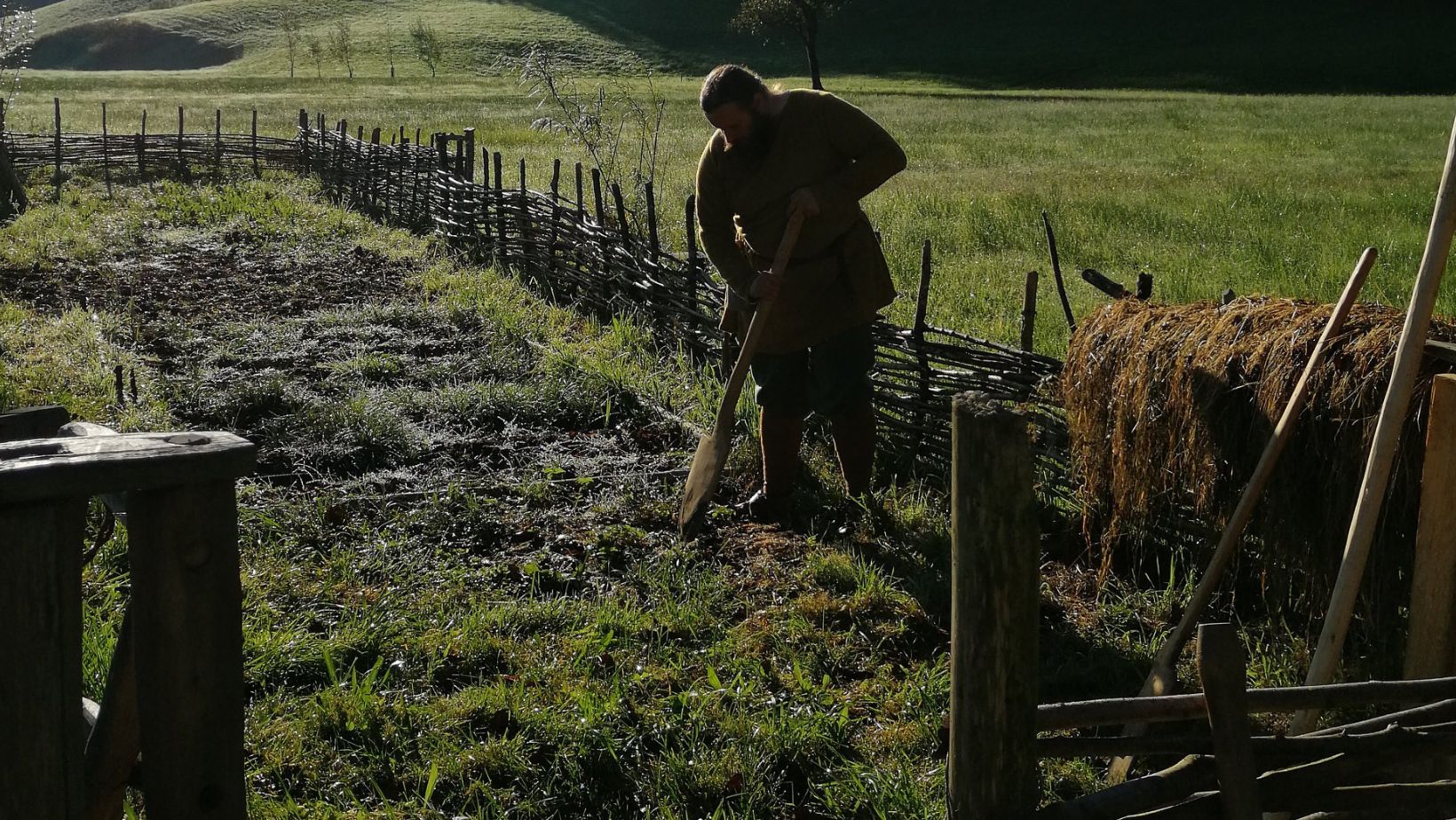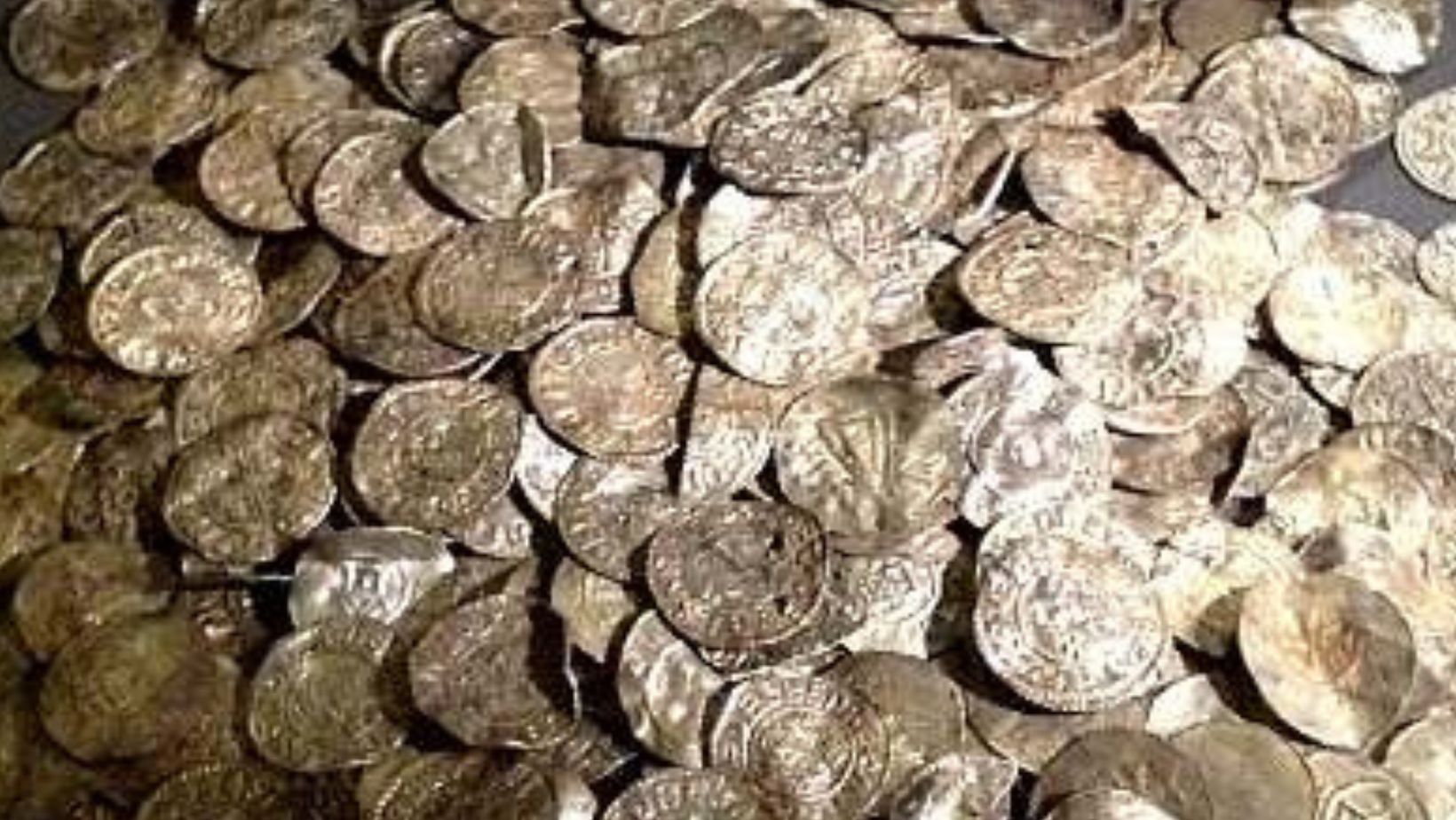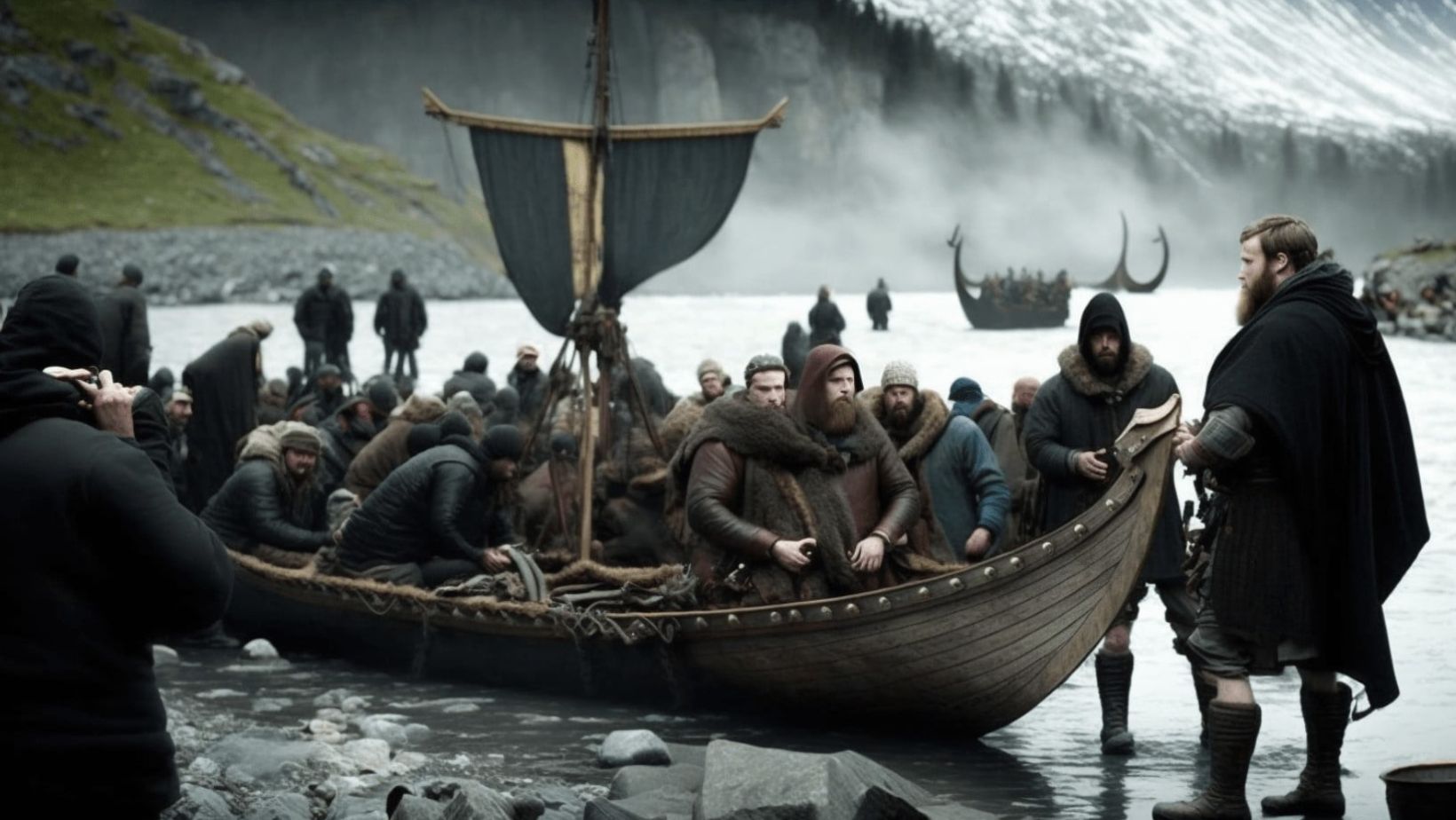When you think of Vikings, raiding and pillaging might come to mind. But their story is more than just conquest; it’s also about clever Viking economic strategies. Vikings were not only fierce warriors but also skilled traders and settlers. They transformed their initial plundering ways into sophisticated trade networks and thriving settlements. This shift from raiding to trading and establishing new lands reveals a lot about how the Vikings adapted and thrived. Join us as we explore how these legendary seafarers turned their plundering into prosperity and built an enduring economic legacy.
The Era of Raids: Economic Motivations Behind Plunder
Viking raids were driven by a desire for wealth and political power. The primary motivation was to acquire riches such as silver, gold, and precious items, which were scarce in Scandinavia. Raiding also allowed Viking leaders to assert dominance and expand their influence across Europe. This quest for wealth and prestige was closely linked to their economic strategies.
Raiding had a profound impact on Viking society and economy. Successful raids provided immediate wealth that was used to enhance social status and fund further expeditions. The influx of valuables also stimulated trade, as raiders often returned with goods that could be exchanged for more supplies or luxury items. However, the reliance on raiding was not sustainable long-term, leading to a gradual shift towards more stable economic practices such as trade and settlement. This transition marked the beginning of a more diversified Viking economy.
Trade Routes and Commerce: Viking Economic Strategies

As the Vikings transitioned from raiding to trading, they established extensive trade routes across Europe and beyond. Major routes included those connecting Scandinavia with the British Isles, the Baltic Sea, and the Mediterranean. These routes facilitated commerce with a variety of partners, including the Byzantine Empire and the Arab world.
Vikings traded valuable goods such as silver, furs, and amber, which were highly sought after in distant markets. Silver was particularly important, often acquired through raids or trade and used as a form of currency. Furs, from animals like sable and marten, were prized for their warmth and rarity. Amber, a fossilized tree resin, was traded for its beauty and used in jewelry.
Trade not only provided economic benefits but also helped integrate Viking society into a broader European and global economy. Through trade, Vikings gained access to goods and resources unavailable in Scandinavia, leading to increased prosperity and stability. This shift from raiding to commerce marked a significant transformation in Viking economic strategies.
Viking Economic Strategies: The Role of Markets and Trading Centers
Viking trading centers played a crucial role in the economic transition from raiding to commerce. Two key centers were Birka in Sweden and Hedeby in Denmark. These bustling markets were hubs for trade, connecting Vikings with other cultures and facilitating the exchange of goods.
Birka, located on Lake Mälaren, was a major trading post that thrived from the 8th to 10th centuries. It was strategically positioned to facilitate trade between the Baltic and the inland regions of Scandinavia. Hedeby, situated near the Jutland Peninsula, was another prominent center, known for its vibrant marketplace and extensive trading connections with the Carolingian Empire and the Slavic world.
These markets were not just commercial hubs; they were also centers of cultural exchange. They enabled Vikings to acquire exotic goods and technology, influencing their own material culture. The significance of these trading centers lay in their ability to support and sustain a growing economy, demonstrating the Vikings’ shift from raiders to traders and their integration into broader economic networks.
Agriculture and Farming: Building a Sustainable Economy

Agriculture was a cornerstone of Viking economic stability and growth. Vikings used a variety of farming techniques to make the most of their land. They practiced crop rotation, growing grains like barley and rye to maintain soil fertility. They also relied on animal husbandry, raising cattle, sheep, and pigs, which provided meat, wool, and dairy products.
Land management was crucial for maximizing agricultural output. Vikings cleared forests and drained marshes to expand arable land, improving their ability to grow crops and graze livestock. They built tools like plows and sickles, enhancing their farming efficiency. This careful management of resources allowed them to support larger populations and establish permanent settlements.
The role of agriculture in Viking prosperity was significant. It provided the food necessary to sustain growing communities and supported trade by creating surplus goods. This surplus allowed Vikings to engage in long-distance trade, exchanging agricultural products for luxury items and raw materials. Farming thus played a vital role in transforming the Viking economy from one based on raiding to one centered on sustained economic development.
Craftsmanship and Industry: Viking Skills and Production
Viking craftsmanship was vital to their economic success and cultural identity. They excelled in metalwork, creating finely detailed weapons, tools, and jewelry. Viking blacksmiths used advanced techniques to forge strong and durable swords and axes, essential for both combat and trade. Textile production was another significant skill, with Vikings weaving intricate patterns into woolen garments and fabrics.
Local industries played a key role in Viking economic stability. Craftsmanship not only provided necessary items but also stimulated trade by offering high-quality goods to exchange with other regions. Viking artisans produced goods for both domestic use and export, contributing to their prosperity. By mastering these skills, Vikings could create a variety of products that supported their economy and reinforced their social structure.
These industries were crucial for maintaining economic self-sufficiency and fostering trade relationships. They allowed Vikings to diversify their economy beyond raiding, establishing a foundation for long-term growth and stability. The craftsmanship and production skills of the Vikings highlight their ability to adapt and thrive in a changing economic landscape.
Settlement and Land Ownership: Establishing New Economies
Vikings expanded their economic reach through settlement and land ownership in new territories. The process began with exploration, where Vikings identified and claimed land suitable for farming and habitation. Settlements were established by clearing land, building homes, and setting up farms. Land was often distributed among settlers based on social status and need, with chieftains and prominent figures receiving larger or more strategic plots.
The economic impact of these settlements was significant. By establishing agricultural bases, Vikings were able to support larger populations and generate surplus goods. This surplus not only fed the local population but also facilitated trade with other regions. Settlements like those in Iceland and Greenland demonstrated how Vikings adapted to different environments, creating self-sustaining economies and integrating into existing trade networks.
The establishment of new settlements allowed Vikings to reduce their reliance on raiding and build more stable, long-term communities. It also enabled them to influence and integrate with local populations, leading to cultural exchanges and economic growth. Overall, Viking settlement strategies played a crucial role in transforming their economy from one based on plunder to one grounded in agricultural and trade-based prosperity.
Taxation and Tribute: Viking Economic Strategies for Control

Taxation and tribute were key economic strategies used by Vikings to maintain control and influence over their territories. Vikings collected taxes and tribute from newly conquered lands and settled regions. Methods included direct taxes on goods, land, and produce, as well as tributes paid by local rulers or chieftains. This system ensured a steady flow of resources into Viking-controlled areas.
These economic strategies had a significant impact on Viking expansion. By imposing taxes and tributes, Vikings could fund further expeditions and maintain their growing territories. This steady revenue allowed them to support military campaigns, build infrastructure, and enhance their political influence. The ability to collect and manage resources also helped consolidate control over newly acquired lands and integrate them into the Viking economic system.
Taxation and tribute not only provided financial stability but also reinforced the Vikings’ dominance over their subjects. They established administrative systems to manage these resources effectively, demonstrating their ability to govern and sustain large territories. This approach played a crucial role in the Vikings’ transition from raiders to rulers and builders of a lasting economic and political empire.
Economic Impact of Viking Exploration: Viking Economic Strategies
Viking exploration beyond Scandinavia had a notable economic impact. Vikings ventured to Iceland, Greenland, and even North America, expanding their reach and resources. In Iceland, they discovered new lands with fertile soil and ample fishing opportunities. Greenland offered valuable resources, such as walrus ivory, which were traded in Europe.
Exploration also brought economic challenges. The harsh climates and remote locations of these new lands required significant investment in terms of resources and labor. Establishing settlements in such areas involved risks and substantial costs. The difficulties of maintaining supply lines and managing distant colonies could strain Viking resources.
Despite these challenges, exploration ultimately provided substantial economic benefits. New lands opened up trade routes and access to untapped resources. Vikings could trade goods from these distant regions, enhancing their wealth and influence. The exploration expanded their economic network, integrating them into broader trade systems and demonstrating their adaptability and resilience.
Viking Economic Strategies: Viking Social Structure and Its Economic Implications
The Viking social structure played a significant role in managing their economy. Society was organized into a hierarchy with kings and chieftains at the top, followed by warriors, traders, and farmers. This structure influenced how resources were allocated and managed. Leaders and chieftains held the authority to distribute land, oversee trade, and organize raids or expeditions.
Viking leaders and chieftains had a profound impact on economic strategies. They made critical decisions about where to raid, trade, or settle, shaping the economic landscape. Their control over resources and wealth allowed them to maintain power and influence. By directing economic activities and managing resources, they ensured the prosperity of their communities and supported their political ambitions.
The hierarchy also determined who benefited from economic gains. Wealth and resources were often concentrated among the elite, reinforcing their status and power. This social structure helped maintain order and stability, allowing the Vikings to effectively manage their expanding economic empire. The role of social hierarchy in economic management highlights the interconnectedness of Viking society and its economic success.
Decline and Transformation: Economic Changes Post-Viking Age

The decline of traditional Viking economic strategies was influenced by several factors. As Viking raiding became less viable due to increased resistance and political changes in Europe, their focus shifted. Settlements faced challenges from local rulers and changing trade dynamics, which undermined the economic foundations of Viking society. Additionally, the integration of Viking lands into larger European political structures led to a reduction in their autonomous economic practices.
Despite this decline, Viking economic practices left a lasting impact on medieval Europe. The trade networks established by the Vikings were absorbed into European commerce, influencing trade routes and economic systems. Their advancements in navigation and trade contributed to the development of medieval European economies. Moreover, Viking cultural and technological contributions helped shape European economic practices and urban development.
The transformation from raiding to trading and settlement set a precedent for future economic practices in Europe. The blending of Viking and European economic strategies facilitated a smoother transition into the medieval economy. This period of change reflects the adaptability and enduring influence of Viking economic practices on the broader European economic landscape.
Conclusion: Understanding Viking Economic Strategies
Viking economic strategies have left a lasting imprint on modern economics. Their transition from raiding to trading and settlement showcases a remarkable shift from plunder to prosperity. This transformation not only redefined their society but also influenced European economic practices, including trade networks and market structures.
The Vikings’ innovative approach to commerce, land management, and resource allocation highlights their adaptability and enduring impact. Reflecting on their journey from raiders to traders underscores the dynamic nature of economic evolution and the Vikings’ significant role in shaping the economic landscape of their time.
FAQs About Understanding Viking Economic Strategies
How did Viking raids influence the development of European fortifications?
Viking raids prompted many European regions to enhance their defensive structures. The constant threat led to the construction of stronger fortifications, such as stone walls and fortified castles. This defensive upgrade was a direct response to the raiding tactics and military capabilities of the Vikings.
What were some of the key products Vikings exported from their settlements?
From their settlements, Vikings exported various products including furs, iron, and timber. These goods were highly valued in trade networks stretching across Europe and beyond. Additionally, Viking craftsmanship items, like jewelry and weapons, were also significant exports.
How did Viking social hierarchy impact trade practices?
Viking social hierarchy influenced trade practices by determining who controlled trade routes and markets. High-status individuals, such as chieftains and kings, often had the power to dictate trade policies and manage trade goods. This concentration of power impacted how resources were allocated and traded within Viking society.
What role did Viking exploration play in the development of medieval trade routes?
Viking exploration was crucial in developing medieval trade routes. Their voyages established new trade connections between Scandinavia and distant regions, including the Mediterranean and the Middle East. These routes were later integrated into broader European trade networks, enhancing economic exchanges across the continent.
How did the introduction of Viking land management techniques affect agriculture in Europe?
Viking land management techniques, such as clearing and draining land, influenced agricultural practices in Europe. These techniques were adopted and adapted by local populations, leading to more efficient land use and increased agricultural productivity. The Vikings’ methods contributed to the development of European farming practices and land management.

